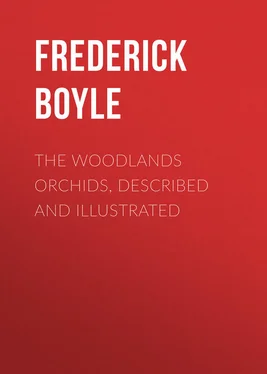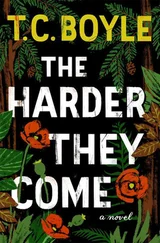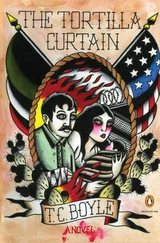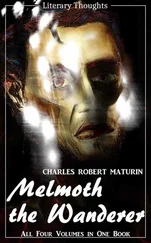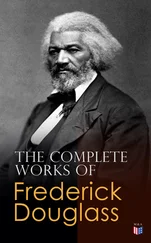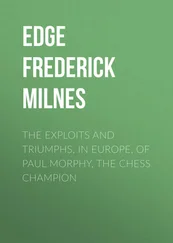Frederick Boyle - The Woodlands Orchids, Described and Illustrated
Здесь есть возможность читать онлайн «Frederick Boyle - The Woodlands Orchids, Described and Illustrated» — ознакомительный отрывок электронной книги совершенно бесплатно, а после прочтения отрывка купить полную версию. В некоторых случаях можно слушать аудио, скачать через торрент в формате fb2 и присутствует краткое содержание. ISBN: , Жанр: foreign_antique, foreign_prose, на английском языке. Описание произведения, (предисловие) а так же отзывы посетителей доступны на портале библиотеки ЛибКат.
- Название:The Woodlands Orchids, Described and Illustrated
- Автор:
- Жанр:
- Год:неизвестен
- ISBN:http://www.gutenberg.org/ebooks/32205
- Рейтинг книги:5 / 5. Голосов: 1
-
Избранное:Добавить в избранное
- Отзывы:
-
Ваша оценка:
- 100
- 1
- 2
- 3
- 4
- 5
The Woodlands Orchids, Described and Illustrated: краткое содержание, описание и аннотация
Предлагаем к чтению аннотацию, описание, краткое содержание или предисловие (зависит от того, что написал сам автор книги «The Woodlands Orchids, Described and Illustrated»). Если вы не нашли необходимую информацию о книге — напишите в комментариях, мы постараемся отыскать её.
The Woodlands Orchids, Described and Illustrated — читать онлайн ознакомительный отрывок
Ниже представлен текст книги, разбитый по страницам. Система сохранения места последней прочитанной страницы, позволяет с удобством читать онлайн бесплатно книгу «The Woodlands Orchids, Described and Illustrated», без необходимости каждый раз заново искать на чём Вы остановились. Поставьте закладку, и сможете в любой момент перейти на страницу, на которой закончили чтение.
Интервал:
Закладка:
The fifth division is a resting-place, where one may sit beneath a grand specimen of Kentia Forsteri, surrounded by palms as in a nook of the jungle, to compare notes and talk of orchids. After such refreshment we enter the last compartment.
To left here are more Mendeliis, to right more Bowringianas, labiatas, and Trianaes mixed; rows of labiata overhead. Specimen Trianaes occupy the centre – some two hundred.
This again is a species so old and so familiar that I need not describe it. But there is none more variable, and we have some of the most striking diversities here.
Macfarlanei. – An immense flower, white, with the faintest possible flush. The great lip, vivid orange beneath the tube, changes to white above the disc. To this succeeds a blaze of purple-crimson, outlined in two semicircles as clear as brush could draw.
Robert Measures. – Lively mauve. The broad petals have three purple lines at the base and a mottling of purple on either side. Lip not large but of the grandest crimson, darker towards the throat.
Measuresiana. – Petals clear mauve, sepals a paler hue, lip very compact. Its carmine rises far up the throat, surrounding the yellow and white ‘eyes’ with the happiest effect.
Woodlandsensis. – Sepals and petals lilac flushed. The great lip beautifully striped with rosy magenta.
Tyrianthina takes its name from the Tyrian purple or wine-coloured tips of the petals – a singular development. The labellum shows the same tint, even darker.
Here also I note Catt. Harrisoniae R. H. Measures . It cannot be said that this differs from the normal type in any respect; but one may venture to assert that it is the finest example thereof – at least, a finer could not be. Upon the mauve sepals and petals, much larger than usual and more lively in colour, the great labellum, primrose and gamboge, with mauve tip, stands out superbly. There is no more striking Cattleya than Harrisoniae in this form.
A STORY OF CATTELEYA BOWRINGIANA
No tale hangs upon the discovery of Cattleya Bowringiana, so far as I have heard. A planter named Turkheim sent it from British Honduras to Mr. Bowring of Forest Farm, Windsor, in 1884. The species has a wide range. Mr. Oversluys came upon it in Guatemala very shortly afterwards, and curious incidents followed.
This admirable collector was hunting for Oncidium splendidum, a stately flower not very uncommon once, but long extinct in Europe. No man knew its home, but Mr. Sander, after close inquiry and profound deliberation, resolved that it must be a native of Costa Rica. Thither he despatched Mr. Oversluys, who roamed the wilderness up and down five years, seeking a prize within his grasp all the time, so conspicuous that it escaped notice – as sharp boys select the biggest names upon a map instead of the smallest, to puzzle a comrade. But that is another story.
Irritated and despairing as time went by, but not permitted to abandon the search, the collector found diversion now and again in a gallop through the neighbouring States. And once he pushed as far as Guatemala. All these forays were profitable, of course; such a shrewd and experienced hunter finds game in every forest. But Mr. Oversluys was not equipped for the wholesale business, as one may put it, on these expeditions. They were reconnaissances. In Guatemala, at the moment which interests us, he had only two servants and three mules.
I do not know exactly where he came across Cattleya Bowringiana; it might be anywhere almost, apparently, in the Central American Republics. The species was rare and very precious at the time – to be secured, though in the smallest quantity. When Oversluys came upon it, he threw away the miscellaneous rarities he had collected, hired two more mules – all he could obtain – loaded as many as they could carry of the very finest plants, specimens such as we dare not dream of now, and started for the nearest port, meaning to return for more so soon as he was ‘shut of your confounded Oncidium splendidum.’ In such disrespectful terms he wrote to St. Albans.
At the house where Oversluys slept one night was a boisterous young Guatemalan, one of the tippling, guitar-strumming, all-round-love-making sort so common in Spanish America. But this youth was an Indian or almost – betrayed by his lank hair and narrow shining eyes. Such a character would seem impossible for one of that blood beyond the confines of Guatemala. But the supremacy of the Indians under Rafael Carrera’s despotism has worked a change there. It lasted long enough to train a portentous generation. When a pig-driver of their race conquered and ruled the descendants of the Conquerors as absolutely as a Turkish bashaw of old, Indians might well abandon the timid subservience of their forefathers.
This young fellow insisted upon playing cards with Oversluys, who declined. Then he began to quarrel. But a good-looking daughter of the landlord intervened, and he promptly struck the light guitar. After supper he felt the warmest friendship for Oversluys, and dropped off to sleep while babbling a serenade to the landlord’s daughter.
The friendship had not evaporated next morning. Don Hilario – he allowed himself the title and a most aristocratic surname – was returning to his native village, through which Oversluys must pass; there to remain, as he admitted cheerfully, until his friends at the capital had suppressed certain proceedings at law. These friends, it appeared, were dames of high position, and the proceedings related to a serious deficiency in his accounts as clerk in the Financial Department. But it was all great fun. Don Hilario could not think of his appearance in the dock without peals of laughter. No apprehension marred his enjoyment. Those great personages named, of the female sex, would take very good care he was not prosecuted – or they had best look out. In short, we recognise the type of a cynical half-caste Don Juan.
As they journeyed on together, Don Hilario noticed the orchids, which were simply slung across the mules. He knew, of course, that such weeds are valued in Europe; every child in those realms is familiar with collectors nowadays. ‘Ah!’ said he, ‘those are poor things compared with the great bushes on the roof of our church.’
Oversluys was roused at once. Since Roezl made the discovery, fifteen years before, every one had come to know that rarities may be expected on an Indian church. The pious aborigines collect any orchid of exceptional beauty which they notice in the woods and carefully replant it on the sacred building. It was the custom of their heathen forefathers.
‘Are there any white ones among them?’ Oversluys asked. An albino form of Cattleya Bowringiana had never been heard of, but he thought it might exist. And if so the roof of an Indian church would be the place to look for such a treasure.
‘As many white as red! I say, what will you give for a dozen?’
This was a difficult question under any circumstances, since the plants could hardly be flowering then; and there is no difference in growth betwixt the white varieties and the red. Besides, Oversluys had not the very slightest confidence in this youth.
‘How will you get them?’ he asked.
‘Never mind that. Pay me half the money down and I’ll bring the plants to-morrow. You know, our Indians are suspicious of collectors. You mustn’t be seen in the village.’
That was reasonable enough in one point of view, but preposterous in the other. ‘Oh,’ said Oversluys, ‘I must see the orchids at any risk – that’s flat! and I must hear how you mean to work.’
‘Why?’
‘Because if you take them without the Padre’s consent you know as well as I that the Indians will be after me at daylight, and – h’m! There would be work for the doctor! What sort of man is your Padre?’
Читать дальшеИнтервал:
Закладка:
Похожие книги на «The Woodlands Orchids, Described and Illustrated»
Представляем Вашему вниманию похожие книги на «The Woodlands Orchids, Described and Illustrated» списком для выбора. Мы отобрали схожую по названию и смыслу литературу в надежде предоставить читателям больше вариантов отыскать новые, интересные, ещё непрочитанные произведения.
Обсуждение, отзывы о книге «The Woodlands Orchids, Described and Illustrated» и просто собственные мнения читателей. Оставьте ваши комментарии, напишите, что Вы думаете о произведении, его смысле или главных героях. Укажите что конкретно понравилось, а что нет, и почему Вы так считаете.
